Thursday
Featured StoriesEnlightened Society Now
Sakyong Mipham Rinpoche and Acharya Pema Chodron Teach on the Bravery of Beingby Lisa Maloof
On Friday, May 2nd in the unhurried warmth of late day, the last registrants flowed toward the entrance of the Craneway Pavilion in Richmond, California. Here, in this strikingly vast and spacious glass building overlooking San Francisco Bay, 1500 people gathered in an atmosphere of stillness and anticipation.
Among them were those who had traveled from 15 different countries, from as far away as India, Singapore, and Brazil, as well as an additional 1500 joining the streaming online broadcast. All had gathered to hear the inspiration of Sakyong Mipham Rinpoche, Acharya Pema Chodron, Rt. Rev. Marc Handley Andrus of the Episcopal Diocese of California and Acharya Adam Lobel, and to explore together the topic of Being Brave: Is Enlightened Society Possible?
As the light outside began to fade, the feel of the room drew in closer as the Sakyong laid the ground for the weekend-long event. Inviting a spirit of inquiry, he suggested that a belief in basic human goodness allows for the inspiration of a meaningful life to occur. Through working with the potency of one’s own mind, “taking our own mind seriously in a good way,” one is able to connect with the inspiration of others. Working together in this way, the possibility arises not so much of individual awakenment but societal awakenment, the notion that “the future Buddha is society.”But in order to bring personal and societal inspiration to bear on a troubled world, one must first be able to relate to the troubled world. This was the territory Acharya Adam Lobel introduced and that Ani Pema’s first talk Saturday morning dwelled upon. In order to counter the downward pull of difficult emotions, taking a bigger perspective is key. To do this, Ani Pema offered the tool of connecting with the rawness and vulnerability of difficult emotions. She also suggested that the quality of society one finds most disturbing may in fact also dwell in ourselves. Using the example of polarization, “where people’s minds and hearts get really tight about their position,” if you can recognize that you may have that same unconscious belief in your own rightness, the sense that the threat comes from the other, you can set the intention, “to do everything I [can] to not add to the polarization in the world.”
Furthermore, to avoid being overwhelmed, you must, “relax around the idea that we are going to make everything change. And realize we are in it to uplift ourselves and the people we are working with.”Showing the level to which Sakyong Mipham Rinpoche and Acharya Pema Chodron built upon one another’s teachings throughout the weekend, Ani Pema integrated her talk on enlightened society Sunday morning with the Sakyong’s teaching of Shambhala Meditation the afternoon before. She taught that it is only through connecting with what one is feeling that one can understand what other human beings feel. In this way, when one connects with what they feel, one connects with humanity. Enlightened society, rather than being a future construct, is a continuous process of working in this way with hearts and minds.
According to Sarah Woodard, the weekend’s coordinator, one of the intentions of the event was to “give people a way to take their inspiration and put it into effect. To make it possible for people to actually meet each other, to share their hearts, and when they leave here continue following their inspiration.” One of the ways this was done was through the affinity gatherings, which were a vibrant and dynamic part of the event. The affinity gatherings, held in various tents outside under headings such as Arts, Healthcare, Technology, Social Justice and Business, were a way for participants to connect around their common fields of interest.
To walk up to one of these tents was to be welcomed into a hive of conversation, small and large, some quite animated. Cookies to eat and name tags that read, “Talk to me about…” helped people break the ice with a contemplation or a struggle, in which they might be currently engaged. Ann Feldman, from Willamette, Illinois found that “the gatherings were a good lesson in understanding that people may all have basic goodness, but they don’t necessarily hear the same things you hear, speak in the same way you speak or interact in the same way you do.”Dr. Adela Sandness, lead facilitator for the Shambhala International Affinity Circle project, says their overarching goal is to create a space to support “the kind of global conversation that leads to global transformation.” Participants were invited to take the connections they made beyond the weekend, get together in small groups – or Affinity Circles – and to register their circles on the Shambhala Principle Affinity Circles website so we can work together within the growing international Affinity Circles network; click here to access the website.
Rev. Marc Andrus added a wide-ranging, ecumenical perspective and engaging style to Sunday afternoon. He began by rousing the large crowd through song and a stirring group spoken-word piece taken from the 1964 Nobel Peace Prize speech by Dr. Martin Luther King, Jr. Andrus then presented the metaphor of practice as similar to training with a bow and arrow. Learning to draw the bow is a practice in concentration, while, “facing into the impossibility of our culture, as it is currently construed,” is the piercing of the arrow, of illusion. And yet the arrow also leads to love, the piercing of the heart.The example of Dr. Martin Luther King, Jr. and the Civil Rights Movement came up again in the question and answer period, which brought the weekend’s four teachers together on the stage for the final session of the retreat. Similar to what was raised throughout the weekend, the Civil Rights movement had a vision of the beloved community and it did not set love and power as opposite one another. Of the questions gleaned from the crowd, the subject of working with urgency while still staying open arose. Ani Pema referred to the example of the Dalai Lama who repeatedly emphasizes process over result, which can often be quite slow. The dishes, said Ani Pema, can be done with resentment or with “presence and pleasure, and that’s what’s being added.”
The weekend was about engaging on many levels with tools for bringing personal inspiration to play in the world. Through the sustained practice of returning to the goodness of human experience, one can begin to connect in a heartfelt way with the community and with a lineage of practitioners and fellow human beings.Says Nicki Guard, of San Francisco, the weekend revealed she can be committed to the path of integrity and intention while not necessarily being attached to the outcome. “I can still keep coming back to myself and coming back to my intention and seeing myself as a player in what’s happening. ”
 ~~
~~
Lisa Maloof writes, teaches and raises two young daughters in Berkeley, California. A graduate of Harvard Divinity School, she has been a student of Shambhala for four years.

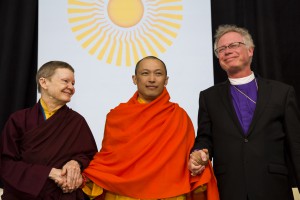
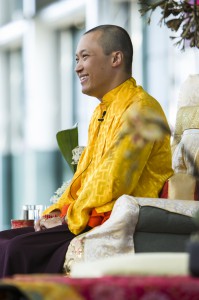
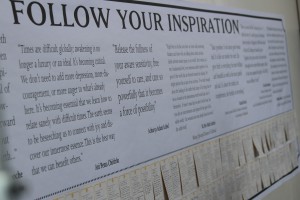
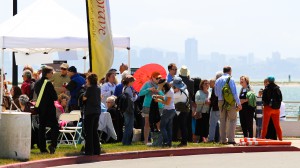
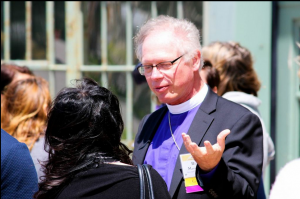
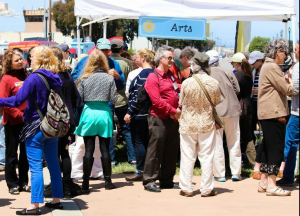




May 18, 2014
Reply
Great article! Thanks, Lisa.